This post contains affiliate links, which means I may earn a commission if you purchase through those links (at no extra cost to you).
I grew up making Orange Marmalade the old-fashioned way: soaking citrus overnight and boiling it rigorously to extract the natural pectin in the rind. When you follow my technique, you don’t need to add any store-bought pectin, and you get the best, cleanest-tasting marmalade.
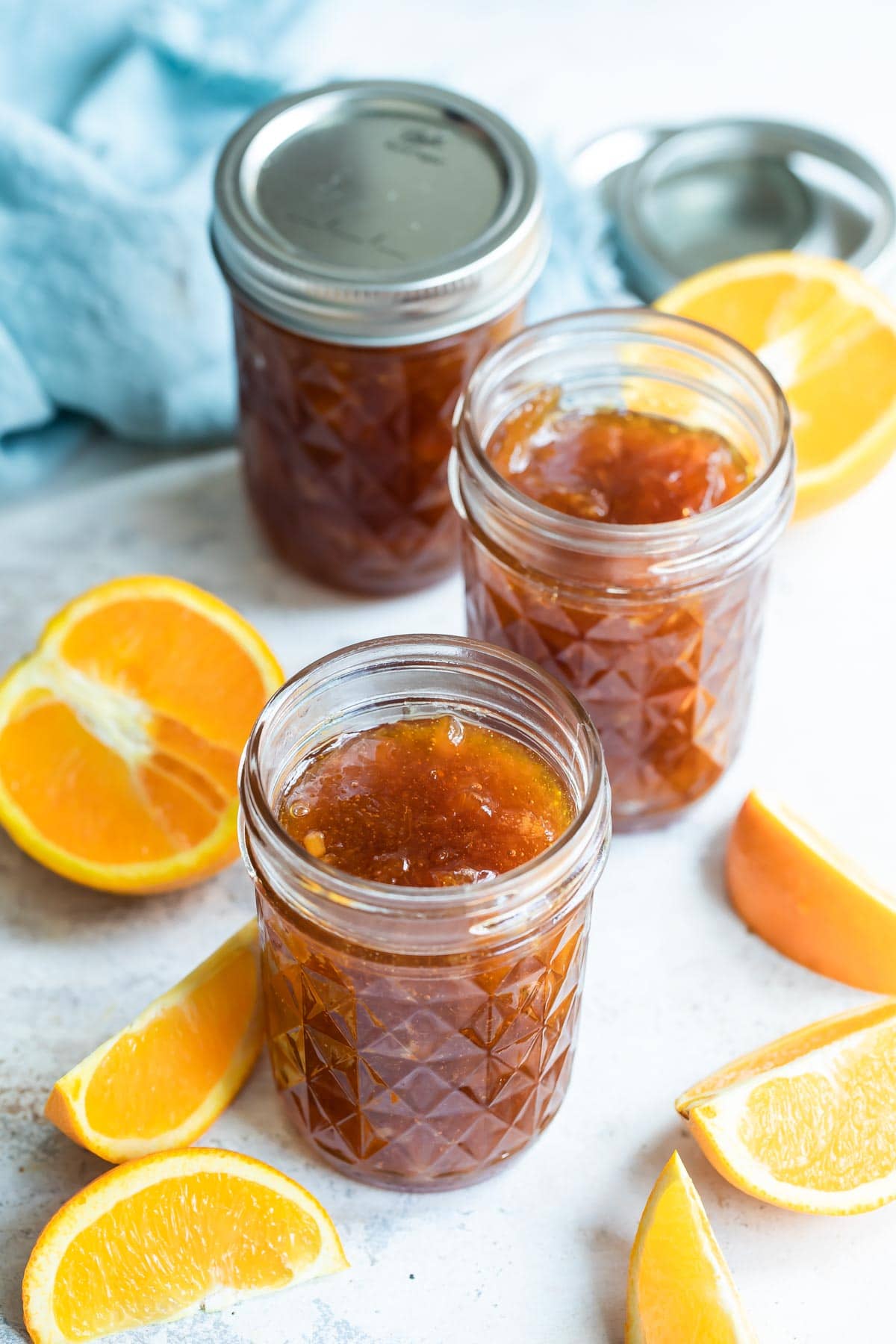
Nearly 1,000 5-star reviews prove this unfussy technique is simple and easy to follow. I also include my handy “cold plate test” so you can know for sure whether your marmalade is done or needs a little bit more time on the stove.
Home cooks everywhere are putting their abundant citrus to use to make their own homemade marmalade, and now you can, too. This recipe makes about 3 quarts total, or 12 (8 ounce jars). It freezes beautifully or you can process it in a water bath for canning.
Table of Contents
Marmalade Ingredients
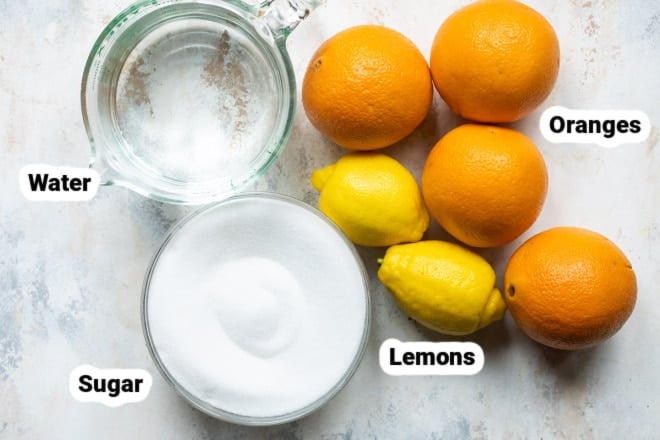
At a Glance: Here is a quick snapshot of what ingredients are in this recipe.
Please see the recipe card below for specific quantities.
- Oranges: This recipe is made with regular seedless oranges. You can definitely substitute Seville oranges if you can find them. They are only in season from the end of January to mid-February, but they have an intense flavor that is ideal for marmalade.
How to make Orange Marmalade
- Using a sharp knife, cut oranges and lemons in half crosswise, then into very thin half-moon slices. Discard any seeds. In a large pot (stainless steel), add the sliced oranges, lemons, and any fruit juice.
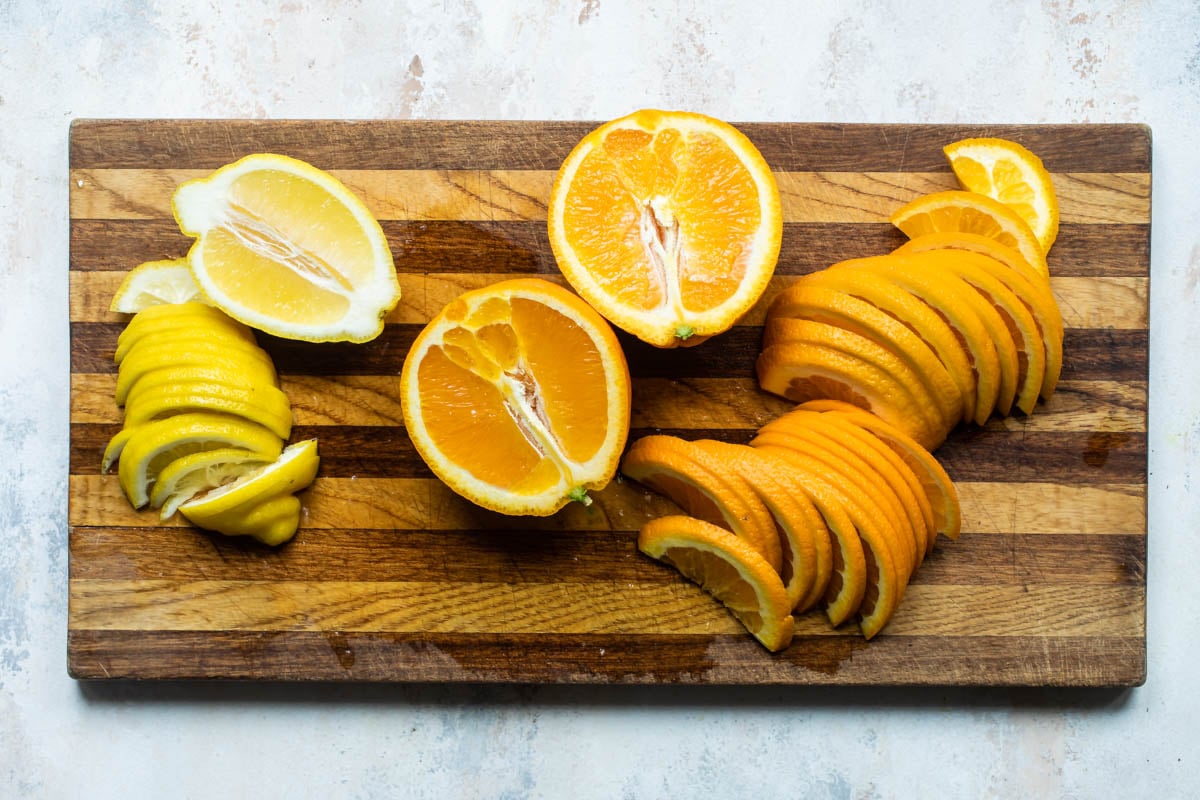
- Add water and bring the mixture to a boil over medium heat, stirring often. Remove from the heat and stir in the sugar until it dissolves. Cover and let stand overnight at room temperature.
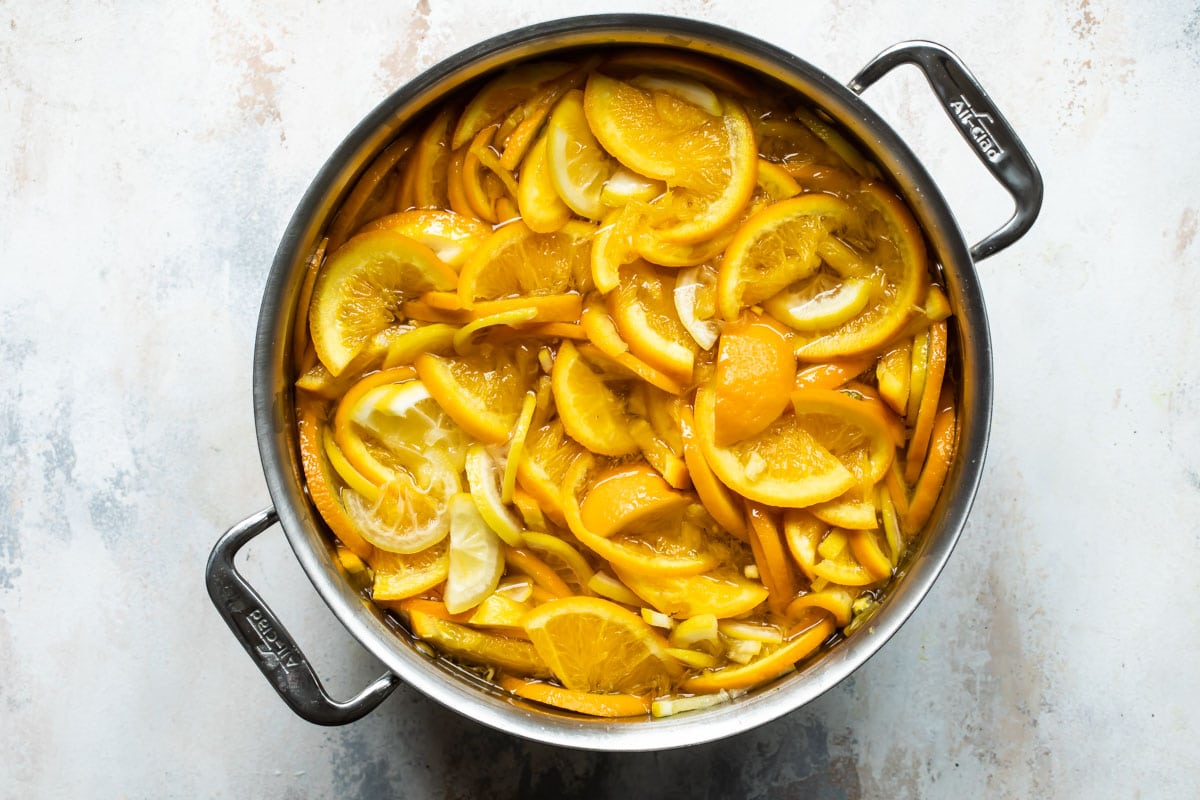
- The next day, bring the mixture back to a boil in the pot or saucepan. Reduce heat to low and simmer uncovered for 2 hours. Turn heat up to medium and boil gently, stirring often, for another 30 minutes. Skim off any foam that forms on the top. Cook until it reaches 220 degrees on a candy thermometer (you must hit this temperature for the natural pectin to gel with the sugar).
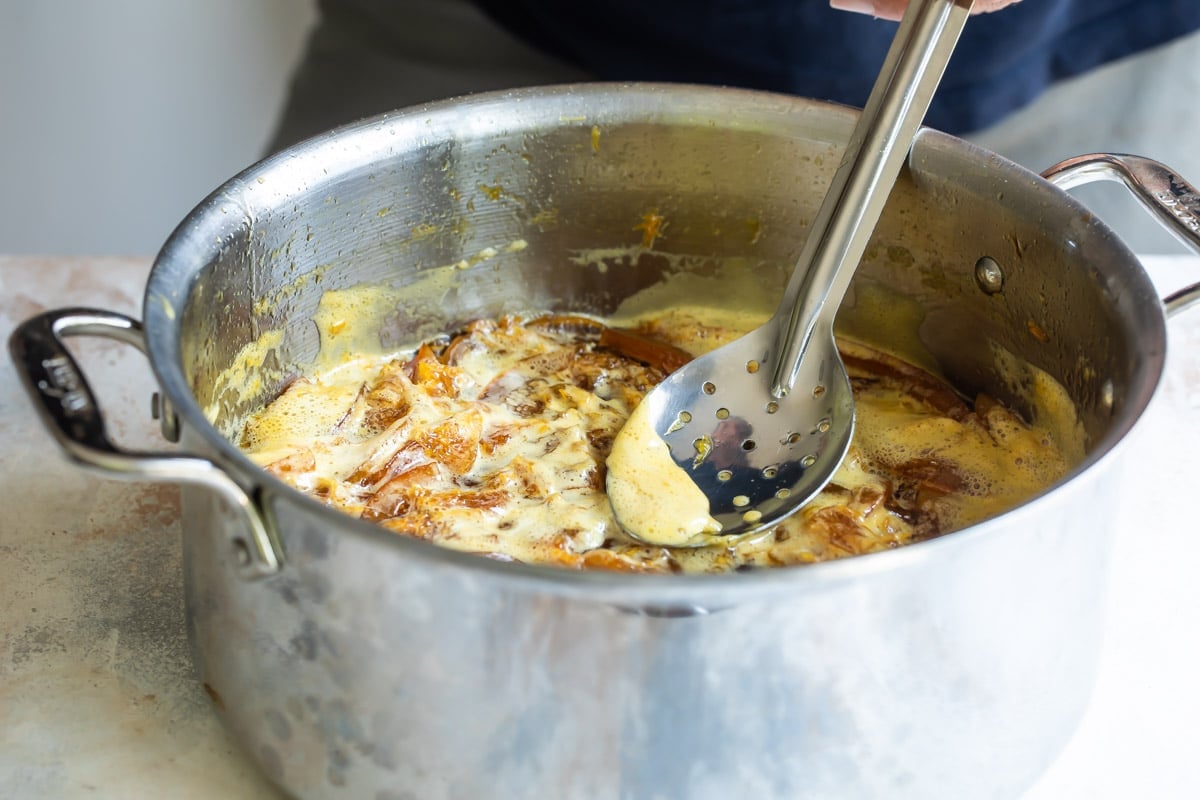
- To test if the marmalade is ready, place a small amount on a plate and refrigerate it until it’s cool but not cold. If it’s firm (neither runny nor hard), it’s ready. It will be a golden orange color. If it’s still runny, continue cooking it; if it’s hard, add a bit more water.
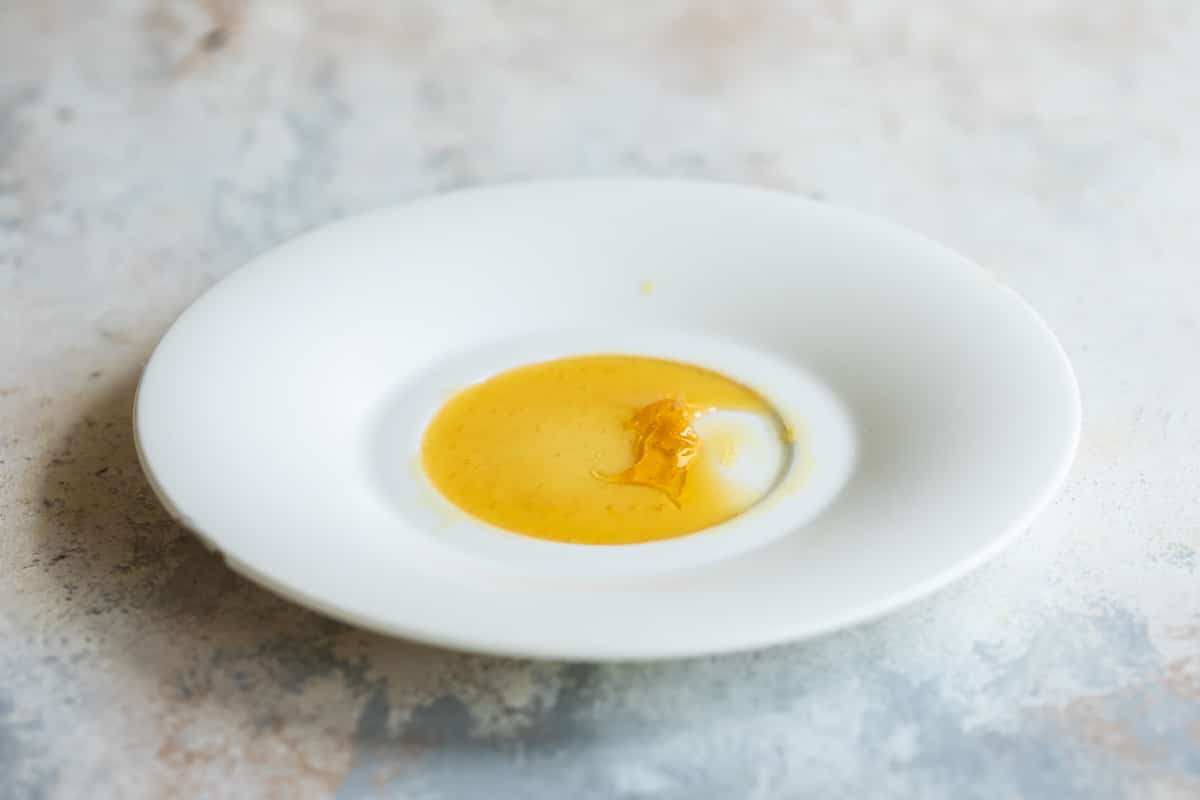
- Pour or ladle the marmalade into clean hot mason jars (I use this wide-mouth jar funnel for this recipe and so many others). Wipe the rims thoroughly with a clean damp paper towel, and seal with the lids. Chill in the refrigerator. It may take 24-48 hours for the natural pectin to set up properly.
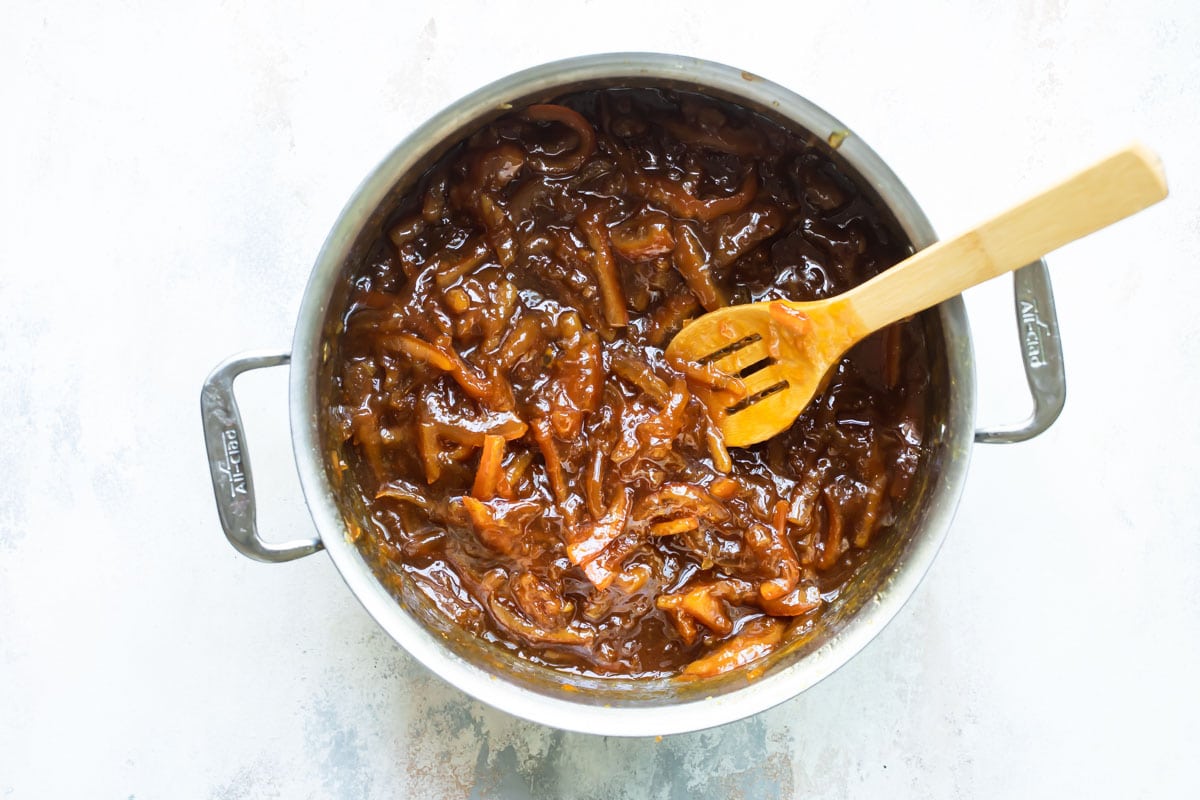
Orange Marmalade Recipe Variations
- Pectin: While many jam and jelly recipes require added pectin, you don’t need to add any here. Pectin is naturally concentrated in the pith of the orange (the bitter white part under the peel). This recipe coaxes out that natural pectin by letting the citrus soak overnight and then boiling it rapidly until enough water has evaporated that the mixture can reach 220 degrees.
- Agave nectar: Agave cannot penetrate and sweeten the peel as well as sugar can. When I tested it, the consistency was fine, but the rind tasted like raw rind. I don’t recommend this substitution.
- Low sugar: I haven’t tested low-sugar/alternative sweeteners in this recipe other than agave as listed above nor have I tweaked the amount of sugar in the recipe. I recommend seeking out recipes from experts in that area.
- Slow cooker: While it is technically possible to make marmalade in your slow cooker, it really depends on the power of your appliance. I no longer recommend that method because it isn’t reliable enough.
- Instant pot: Even with an overnight soak, the IP doesn’t break down the rind sufficiently. I don’t recommend this method.
Marmalade Recipe Tips
- Yield: This recipe makes about 3 quarts (96 ounces) of marmalade.
- If using 1/2-pint (8 ounce) jars, you’ll need 12.
- If using 1 pint (16 ounce) jars, you’ll need 6.
- If using the tiny jelly jars (4 ounce), you’ll need 24.
- Cold-plate test: To test if your marmalade is ready, spoon some hot marmalade on to a small plate and put it in the freezer to chill, or spoon some over an icy cold plate fresh from the freezer. If the mixture wrinkles slightly when you draw a spoon or finger across it, it has reached the setting point and is ready to go! If not, keep boiling and make sure the temperature reaches 220 degrees.
- Set-up time: Orange marmalade takes 24-48 hours for the natural pectin to set up completely. If it’s is still a little runny looking when it cools, check again in a day or two.
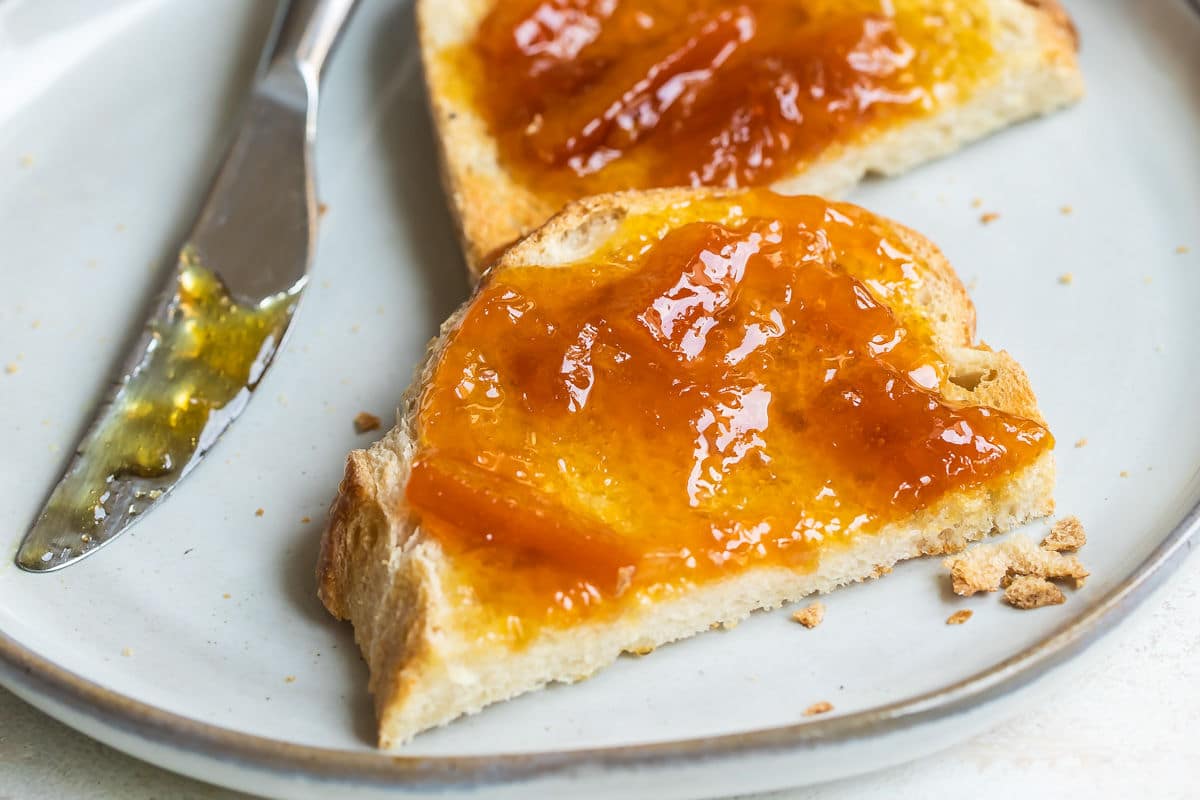
Storing and Canning Orange Marmalade
Storage: Store covered in the refrigerator for up to 1 month.
Freezer: Pack in freezer-safe containers or jars leaving 1/2-inch of headspace for expansion. Label, date, and freeze for up to 3 months. Thaw overnight in the refrigerator.
Canning: If putting up for storage, use a hot water or steam canner with a rack to properly seal lids on canning jars according to canning instructions. Otherwise, refrigerate and use within the month. Or, freeze for up to 3 months.
Frequently Asked Questions
Pectin is naturally concentrated in the pith of the orange (the bitter white part under the peel), so you don’t need to add any here. This recipe coaxes out that natural pectin by letting the citrus soak overnight and then boiling it rapidly until enough water has evaporated that the mixture can reach 220 degrees.
While it is technically possible to make marmalade in your slow cooker, it really depends on the power of your appliance. I no longer recommend that method because it isn’t reliable enough.
Even with an overnight soak, the IP doesn’t break down the rind sufficiently. I don’t recommend this method.
Agave cannot penetrate and sweeten the peel as well as sugar can. When I tested it, the consistency was fine, but the rind tasted like raw rind. I don’t recommend this substitution.
I don’t recommend making this recipe in a regular cast iron pan. It should be made in a non-reactive pan. Enameled cast iron, stainless steel, and non-stick are best and will not affect the color or taste of the marmalade
More fruit recipes
Pie and Tart Recipes
Fresh Fruit Tart
Fruit Dessert Recipes
Apple Crisp with Oatmeal
Cake Recipes
Lemon Bundt Cake Recipe
Muffins and Quick Breads
Banana Muffins
Join Us

Orange Marmalade
Equipment
- Jar funnel (for wide mouth jars)
Ingredients
- 4 large seedless oranges scrubbed clean (about 3 pounds or 8 cups slices, see note 1)
- 2 lemons (about ½ pound or 1 cup slices)
- 8 cups water
- 8 cups granulated sugar
Instructions
- Cut oranges and lemons in half crosswise, then into very thin half-moon slices. Discard any seeds. In a large stainless steel pot, add the sliced oranges, lemons, and any accumulated juices.
- Add water and bring the mixture to a boil, stirring often. Remove from the heat and stir in the sugar until it dissolves. Cover and let stand overnight at room temperature.
- The next day, bring the mixture back to a boil. Reduce heat to low and simmer uncovered for 2 hours. Turn heat up to medium and boil gently, stirring often, for another 30 minutes.
- Skim off any foam that forms on the top. Cook the marmalade until it reaches 220 degrees (you must hit this temperature for the natural pectin to gel with the sugar).
- To test if the marmalade is ready, place a small amount on a plate and refrigerate it until it's cool but not cold (see note 4). If it's firm (neither runny nor hard), it's ready. It will be a golden orange color. If the marmalade is runny, continue cooking it; if it's hard, add a bit more water.
- Pour the marmalade into clean hot mason jars; wipe the rims thoroughly with a clean damp paper towel, and seal with the lids. Chill in the refrigerator. It may take 24-48 hours for the natural pectin to set up properly.
Recipe Video
Notes
- Oranges: This recipe is made with regular seedless oranges. You can definitely substitute Seville oranges if you can find them. They are only in season from the end of January to mid-February, but they have an intense flavor that is ideal for marmalade.
- Yield: This recipe makes about 3 quarts (96 ounces) of marmalade.
- If using 1/2-pint (8 ounce) jars, you’ll need 12.
- If using 1 pint (16 ounce) jars, you’ll need 6.
- If using the tiny jelly jars (4 ounce), you’ll need 24.
- Storage: Store covered in the refrigerator for up to 1 month.
- Cold-plate test: To test if your marmalade is ready, spoon some hot marmalade on to a plate and put it in the freezer to chill, or spoon some over an icy cold plate fresh from the freezer. If the mixture wrinkles slightly when you draw a spoon or finger across it, it has reached the setting point and is ready to go! If not, keep boiling and make sure the temperature reaches 220 degrees.



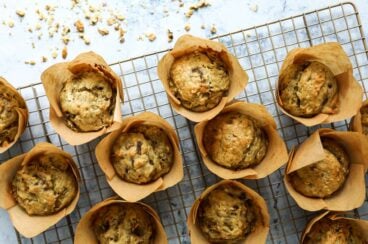
Hi, making this recipe now. I upped the recipe since I had 8 oranges. Is it shelf steady? I don’t have enough room in my refrigerator to store 14 jars.
Hi Jackie, if you would like to store on the shelf, the marmalade will need to be canned in a steam or water bath. Otherwise, besides refrigerating, you can freeze it for up to 3 months. I hope this helps! – Meggan
Such a consistently delicious recipe. I made orange and then lemon marmalade using this last year and I am just about to make orange marmalade with home grown oranges and Meyer lemons. 🤞🏽 it turns out as delicious as last year!
Thanks, Anita! I hope this batch turns out great! – Meggan
I just finished making this recipe with oranges from my yard and it turned out perfect! My oranges are very mild, but I still got a well-rounded flavor packed marmalade. The only thing I did differently was to use an immersion blender to break up the pieces before the last boil. I was able to finally get it up to temp using my lower high setting with the lid for a few minutes, but I think it would’ve been fine without the lid. Mine is on the thick side and only filled 5 pint mason jars.
I will be making this over and over! It looks exactly like the picture.
Thanks for writing, Leah! I’m so glad you loved it! – Meggan
I’ve made this twice now with excellent results. Question tho – is it possible to just turn it to a simmer once it initially boils, then complete the rest of the process in one day? I love the flavor of this one but just wondering if it’s possible for it to be done that quickly or if the soak is really the trick. Thanks for a great recipe!
Hi Aimee, the soak is to coax the natural pectin out of the oranges and soften the rind, so I don’t recommend skipping that step. It will likely turn out fine, but I feel the soaking is key to great marmalade. I’m so glad you enjoyed it! Thanks for writing! – Meggan
Great recipe, really old English style taste. Absolutely loved it.
Struggled some with hitting the right consistency though. It seems that the 220 degF / 104.4 degC mark was way below what I needed. I ended up at 110degC, which gave the stiffness I was lookin for
Maybe the fruit quality plays in? Mare or less pectin content? My oranges were very watery and tended to melt away as I cut the slices. I found the stiffness testing to work alright, though it was slow, even when using pre-refrigerated plates. And the results tended to be on the soft side compared with the Jared up marmelade.
Keep up the good work!
Hi Endre, I’m so glad you loved it! Sounds like the very ripe fruit could be what caused it to be softer. Since we count on the natural pectin in the fruit for a thicker consistency, they might have been a little juicy for the amount of pectin in the batch. Thank you for taking the time to write and share! – Meggan
In the middle of trying this recipe x’s 15. So it’ll also be a lot of marmalade to hand out.
It’ll be made in several small batches.
Have you ever canned this recipe, so it’s shelf stable?
I looked at several recipes that mentioned canning it. But started with this one for it’s simplicity. But not seeing where you said you’ve canned it before.
May have to go with canning other fruit jam & such practices.
Thanks so much.
I’m betting it’s amazing marmalade.
Hi Joseph, wow! What an undertaking! It is suitable for water bath or steam canning. I hope everyone loves it, it’s a great gift! – Meggan
I used this recipe a few times, mixing various citrus fruit as they become available. It works like a treat but beware that a fair bit of liquid, I say at least half will evaporate . So if you plan for one litre/kilo, start with at least two of the combined ingredients. Most importantly, it tastes great!
Meggan, Thank you so much for this recipe.
This is the second time using this recipe and it is perfect. I make it for friends and family and they never turn it down. I agree with the commenter that there is a bitterness but scraping the rinds of the lemons and oranges really helps.
I’m huge fan!
Kathleen
You’re so welcome, Kathleen! – Meggan
I made this marmalade yesterday and today, but used half a cup of sugar, instead of 8 cups. Marmalade is supposed to be bitter, not sweet, like jam – but my marmalade IS sweet! The oranges were very sweet ones, so they added to the sweetness. My finished product is delicious and not even bitter at all. So I would use even less sugar next time I make it.
I generally find American recipes use waaayyyy too much sugar and I automatically halve or one third the sugar content if I use a recipe that comes out of America.
Thank you for trying the recipe and adjusting it to your taste. I hope you are still able to enjoy it 🙂 – Meggan
I have never made jam or marmalade this the first time 😁
Following the Recipe carefully adding 2 x Limes as well
your instructions were so easy to follow.
Yes I produced 6 medium jars,I can’t wait too start using my first batch.
Thankyou so much
I’m so glad it turned out well for your first time, Lynne. Thank you for trusting me 🙂 – Meggan